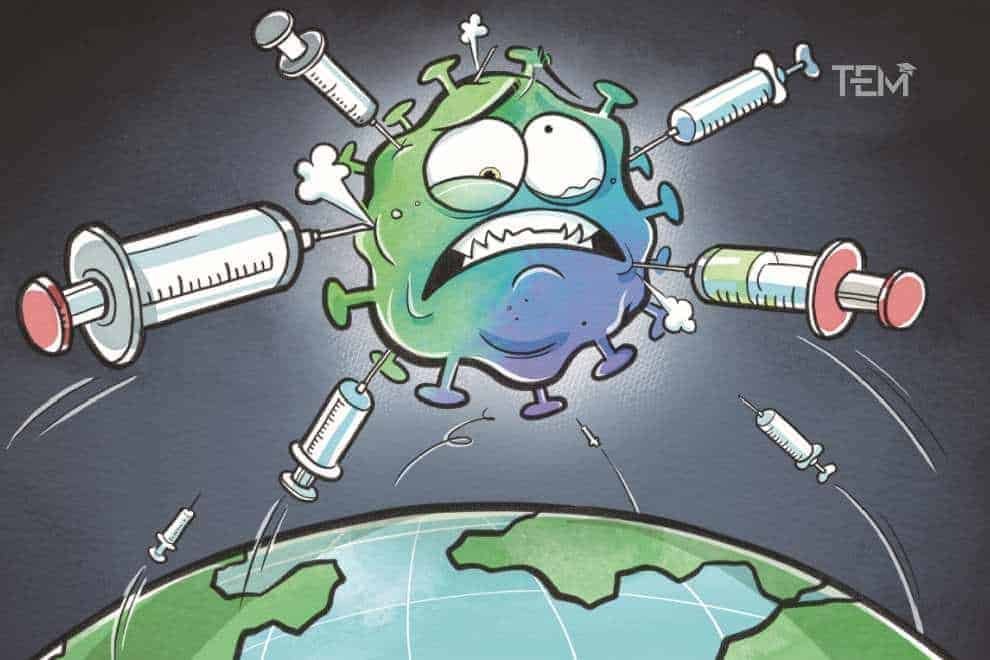Okay, you are reading this and you’ve grown your reading skills sitting at home fighting the coronavirus. The news cycle over the past few months that you’re consuming has brought a lot of collective trauma in your life. The COVID-19 has really sent the entire world into a panic. The global economy has spiraled. The U.S. stock market alone has lost more than $11.5 trillion and as a result, it’s oil prices are leaking.
We absolutely need to take this scenario seriously but without losing our patience. Humanity has fought and won over many worst-case scenarios. Only when arguments meet optimism that helps diminish the panic. So here are 5 reasons to be optimistic during coronavirus.

You can make a difference
Take the lead at your workplace, at home, or at school. Be a paragon of the advice that we all know by now, meticulous hand-washing, distancing yourself from others, avoiding unnecessary meetings, staying at home when possible, and in particular isolating yourself if you are sick. The time has passed to worry about being teased for being overdramatic. It’s much better to overreact in a productive way than to fail to take this seriously. We can all be that person willing to take the first step.

You’ve probably seen this graph or heard the phrase flatten the curve, so what’s that all about? Well simply put, countries which are not on total lockdown by saying, “I’m not going to contain the virus”, that chance has essentially passed. Okay, that’s fine! We’re not looking for a total cessation of spread but what we do is delay the virus’s progress through the population. So even if isolation, hand-washing, and closing public places do not significantly reduce the eventual overall number. It might spread the effect out. The area under the curve doesn’t change significantly but the peak does.

The virus is not an unstoppable monster
Coronavirus is serious but weak. It’s an enveloped virus that is highly susceptible to basic everyday cheap soap. The envelope around the virus is basically like a fat droplet and as we all know soap breaks up fat. Alcohol gel over 70% also dehydrates this layer. Norovirus, the vomiting bug that you’ve probably heard of from cruise ships and hospital wards, is much harder to get off your hands or surfaces. The virus is not aerosolized, it’s not truly airborne. True borne diseases are things like Measles which if you sneeze they stay in the air for a very long time and infect many people. This spread in larger droplets which after coughing or sneezing fall to the floor within a few seconds once the virus is on a surface. It stays there for hours perhaps a couple of days however it can be easily cleaned with regular everyday household cleaning products.

The stats are better than you think
There is understandably a lot of interest in the Case Fatality Rate i.e., what percentage of people who are infected go on to die. But it’s more nuanced than just saying the number in isolation is around 3 to 5% at the moment. More than 80% of coronavirus cases in China were mild. The virus changes drastically different from region to region from time to time. In early January in China, the fatality rate was over 20% but rapidly fell 2.7% by February. South Korea’s case is much lower than Italy’s. Does that mean Korea’s hospitals are much better? Probably not, it’s all to do with simple maths. The Case Fatality Rate is calculated by dividing the number of deaths by the total number of cases and multiplying by a hundred.
You can easily see that the larger the denominator the smaller the rate will be. There will be many mild cases that have not been diagnosed. There is a bias towards severity because the mild people don’t seek help. Secondly, it depends on how many tests are countries sending. Korea has intensively tested its population sending off tens of thousands of tests in a short time. America, for example, has not tested many at all. This will affect the Case Fatality Rate, and with time we’re likely to say it go down across the world just as it has done in China and Korea. Johns Hopkins has suggested the case fatality rate at the end will be at most 0.6%, and for comparison, seasonal flow is 0.1.

Other countries are getting on top of it
We’re seeing encouraging results from countries that are further along the chronology. At the time of recording, there have been about 130,000 cases in the world with 70,000 recovered. But the actual recovery percentage is like to be much higher due to the way that they’re recovered is defined epidemiologically. China, Korea, Singapore, Hong Kong, and Taiwan are seeing improvements. Now China’s intensely authoritarian approach is not really an option for most countries nor it should be but we can replicate some of the measures taken by them.

The scientific community working around the clock
Most people will be consuming updates about the virus by news channels but for us, in the medical world, we’re reading the journals. Medical journals are articles that are published after months of their submission. For acceptance, the medical press tends to move slowly but accurately. The blown results are when China, Korea, and other early affected countries despite being swamped and working around the clock treating patients and losing some of their own ranks they’ve been publishing enormously. So have experts around the world we’re seeing faster turnaround times ever known for scientific publications. Overall, it’s cheerful to see scientists being listened to by politicians for a change.
When the first lab to grow the virus outside China in Melbourne announce their success, they immediately share their knowledge and their samples. We’re seeing incredible cooperation among academics, WHO, CDC, and so on. A vaccine might be a while off yet but we’re witnessing many potential treatment options being tested. HIV and AIDS in the early days when again the scientific community was dealing with something that they hadn’t seen before. It took years to identify them. But here, we already know what we’re dealing with. We must feel confident that we’ve got the brightest and best scientific minds on the case and we will beat this too.
Also Read,
Vitamin C: An Effective Coronavirus Treatment













